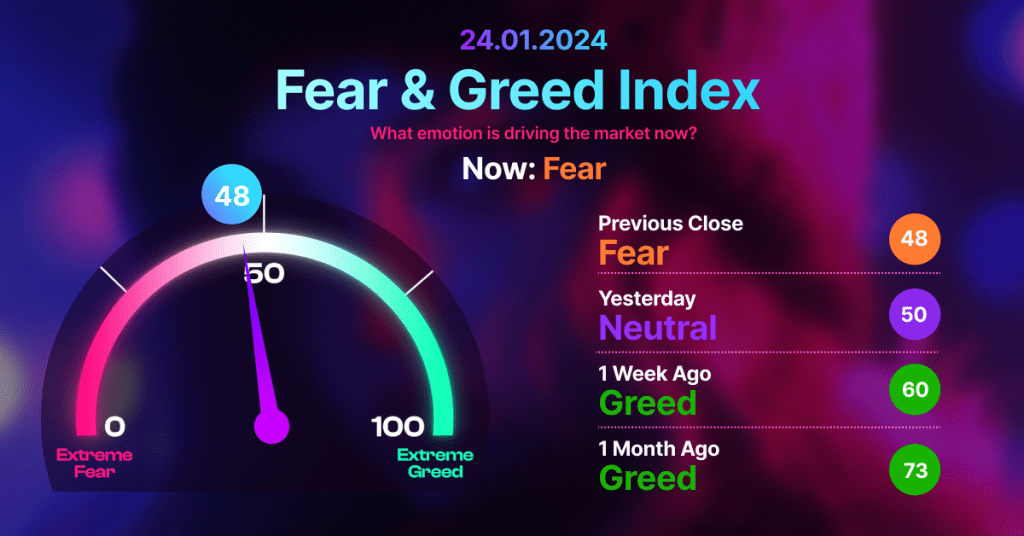Bitcoin hits two-month lows: $38,500; OKX Exchange to Compensate Users Following 48% Token Flash Crash; Radiant Capital Initiates Debt Repayment After $4.5 Million Flash Loan Exploit
According to data from TradingView, Bitcoin fell as low as $38,505.
Attention has focused on GBTC, which still has more than $20 billion in assets despite billions of dollars of BTC sold this month.
According to data from crypto company Arkham, 15,200 BTC ($590 million) was transferred from GBTC assets to Coinbase on January 23.
While this figure was slightly lower than the previous day, the final figures are not clear, and the issue has continued to attract skeptical comments.
“At least it’s down from yesterday,” popular trader Daan Crypto Trades posted on X. he said.
“Yesterday, net flows across all ETFs were slightly negative, so ETFs are still doing well.”
Daan Crypto Trades mentioned the performance of newly launched ETFs in the US. Inflows into the new funds neutralized GBTC outflows.
Some blamed not GBTC issuer Grayscale, but FTX, which disposed of a significant amount of GBTC.
The CEO of Bitcoin technology firm Blockstream said, “Selling GBTC for Bitcoin does not push the BTC price down. Selling for dollars and holding dollars does,” he said.
Will the “sell the news” reaction to Bitcoin ETFs fade?
BTC long positions had another tough day in relation to spot liquidations.
According to the latest data from statistics source CoinGlass, long positions liquidated over the two days to January 23rd stood at $110 million at the time of publication.
Optimists say the selling pressure won’t last forever.
Bloomberg ETF analyst Eric Balchunas also highlighted BTC’s 2023 performance.
BTC has outperformed most stocks, up 75 percent in the past 12 months.
OKX Exchange to Compensate Users Following 48% Token Flash Crash
Cryptocurrency exchange OKX has announced plans to compensate users affected by a flash crash in its native token (OKB) that occurred on January 23.
During the crash, which lasted less than 15 minutes around 9 am GMT, the price of OKB plummeted by 48% from $46.80 to $25.10. The sudden drop resulted in a loss of $6.5 billion in diluted market capitalization, followed by a rapid recovery. As of the current publication, OKB is trading at $45.94.
OKX staff stated that the crash triggered the liquidation of numerous large leverage positions, leading to a cascading effect and further market impact. This caused the liquidation of pledged loans, leverage transactions, and cross-currency transactions, ultimately resulting in the token’s price dropping to $25.10.
In response, OKX has committed to fully compensate users for additional losses incurred due to abnormal liquidation. The exchange plans to release a detailed compensation plan within the next 72 hours.
The flash crash coincided with significant price fluctuations in the broader cryptocurrency market, partly attributed to Grayscale Bitcoin Trust’s sale of Bitcoin to meet investor redemption demands for its exchange-traded fund. FTX, a troubled cryptocurrency exchange, also played a role by selling nearly $1 billion worth of GBTC ETF shares as part of estate liquidations to repay creditors.
OKX has been actively working on regulatory compliance, recently delisting several privacy coins and implementing additional requirements for UK users to comply with new Financial Conduct Authority (FCA) regulations.
Radiant Capital Initiates Debt Repayment After $4.5 Million Flash Loan Exploit
Cross-chain lending platform Radiant Capital has commenced the process of repaying debt following a flash loan exploit that resulted in a $4.5 million loss earlier this month.
In a recent announcement on January 23, Radiant Capital revealed that it successfully made an initial payment of 1,190 Ether ($2.6 million), leaving approximately 720 ETH ($1.6 million) of bad debt outstanding.
The repayment is in line with the RFP-27 proposal, which passed on January 8. With 73% of users voting in favor, the decision was made to repay the bad debt using existing funds from the Radiant DAO Treasury and operating expenditures. The Radiant DAO Treasury had a balance of $5.2 million at the time of the proposal, while the protocol’s monthly revenue was around $500,000.
According to Radiant staff, the remaining bad debt will be paid off over the next approximately 90 days, utilizing the OpEX funds outlined in RFP-27. In case liquidity becomes available sooner, DAO reserve funds may also be leveraged.
The flash loan exploit occurred on January 2, when Radiant’s USD Coin (USDC) lending pool on the Arbitrum network suffered a $4.5 million loss due to a rounding issue in the protocol’s codebase. The attacker exploited a cumulative precision error in the Radiant code, allowing them to profit through repeated deposit and withdrawal operations.
Radiant emphasized the importance of recapitalizing the protocol and fully reimbursing the bad debt to ensure the safety of the platform and provide unrestricted access to deposits for all users. At the time of the exploit, the attacker drained approximately 1.3% of Radiant’s total value locked.


